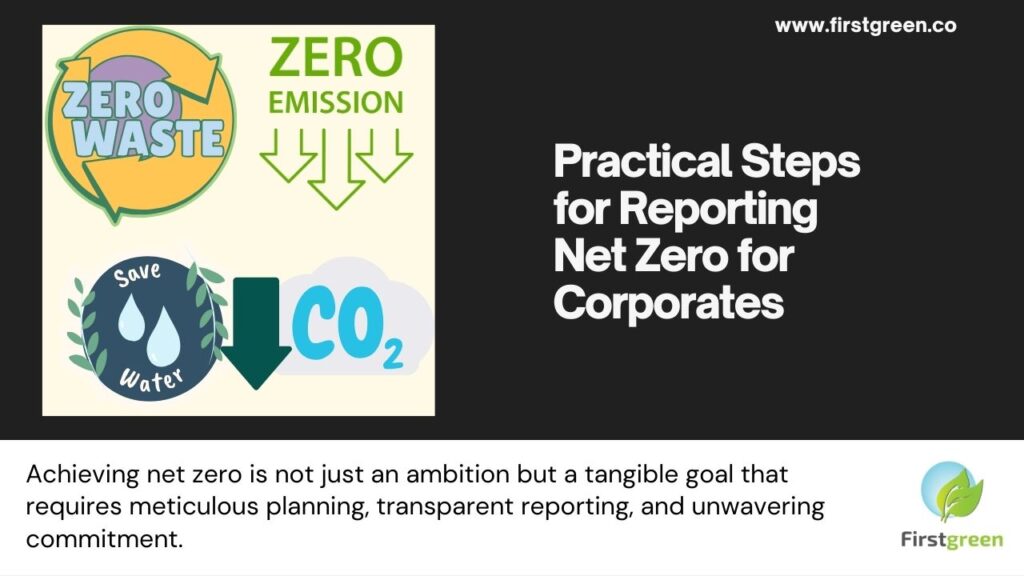Practical Steps for Reporting Net Zero for Corporates

As the global imperative to mitigate climate change intensifies, more companies are pledging to achieve net zero emissions. However, transitioning from commitment to actionable plans and transparent reporting is critical for credibility and effectiveness. Here are practical steps for corporates to report on their net zero targets:
1. Understand the Science Behind Net Zero
Net zero refers to reducing greenhouse gas (GHG) emissions in line with a science-based pathway and neutralizing any remaining emissions through permanent removals. This involves direct actions within the company, across its value chain, or through valid offset credits.
2. Establish a Net Zero Commitment
- Set Clear Targets: Define your net zero target year, baseline year, and the scope of GHG emissions (Scope 1, 2, and 3) included in the target.
- Develop a Comprehensive Plan: Outline a detailed strategy for achieving net zero, including immediate and long-term actions.
3. Develop an Implementation Strategy
- Near-term Actions: Prioritize immediate actions to reduce emissions rather than relying on future removal technologies.
- Inclusion of Scope 3 Emissions: Ensure all relevant and material emissions sources are covered.
- Robust Offsetting Measures: Where offsets are used, ensure they are properly measured, verifiably delivered, and represent permanent removals of carbon from the atmosphere.
4. Identify Risks and Opportunities
- Risk Assessment: Identify the potential risks associated with achieving net zero, including regulatory, financial, and reputational risks.
- Opportunity Mapping: Highlight the opportunities, such as cost savings through energy efficiency and enhanced brand reputation.
5. Provide TCFD-Aligned Disclosure
Align your net zero reporting with the Task Force on Climate-related Financial Disclosures (TCFD) recommendations to ensure transparency and coherence:
- Governance: Disclose the oversight provided by the board and management-level accountability for the net zero strategy.
- Strategy: Detail how the net zero goal responds to identified climate-related risks and opportunities.
- Risk Management: Describe how risks and opportunities connected to net zero are identified and managed.
- Metrics and Targets: Provide clear metrics and targets, including interim targets and annual progress reports.
6. Embed Net Zero into Financial Reporting
- Integrated Reporting: Include net zero commitments in mainstream financial reports to demonstrate financial alignment with sustainability goals.
- Capital Allocation: Develop a forward-looking capital expenditure plan to support the net zero strategy.
7. Report Ongoing Progress
- Regular Updates: Report progress annually and regularly review and update net zero targets and strategies.
- Scenario Analysis: Conduct scenario analysis to assess resilience and prepare for varying climate futures.
Conclusion
Achieving net zero is a journey that requires a strategic approach, clear planning, and transparent reporting. By following these practical steps, corporates can not only meet their net zero commitments but also drive sustainable growth and build long-term value for their stakeholders.
Hashtags: #NetZero #Sustainability #ESG #ClimateAction #TCFD #CarbonNeutral #CorporateSustainability #GreenBusiness #SustainableFinance #FirstgreenConsulting